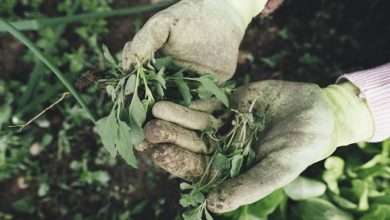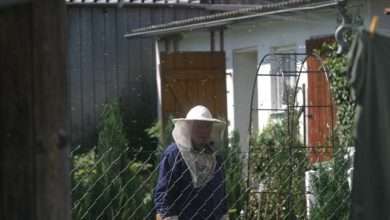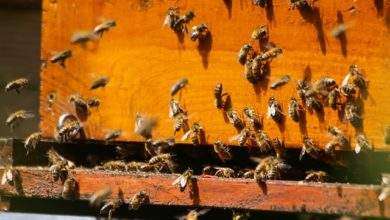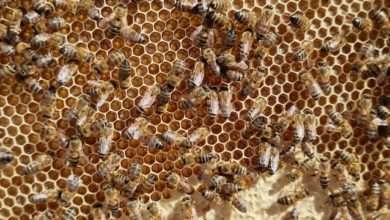The Care of Bees in Winter
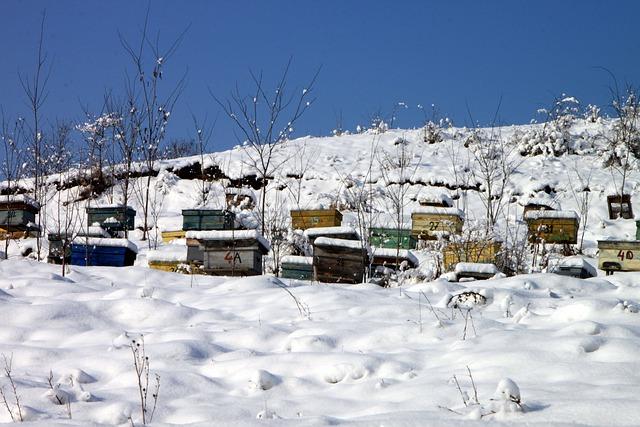
For honeybees to survive the winter season in cold climates it is necessary that they be able to generate considerable heat. They cannot hibernate as do solitary insects and they cannot migrate to warmer climates.
The only method open to them is, therefore, the storage of food and the production and conservation of heat when the outer temperature falls below the critical temperature, 57° F.
Losses in winter
That the winter problem warrants considerable investigation and study is shown by the fact that American beekeepers annually experience an average loss of nearly forty per cent of their colonies.
The value of these amounts to millions of dollars and this loss and the weakening of colonies serve further to discourage the beekeeper and to reduce his income the following year. In certain years the losses have been excessive. The problem is therefore one of vital interest to the beekeeper and is one of the most important in the development of the industry.
Object of winter protection
In providing extra protection to the colonies outdoors or in placing them in special cellars, the object of the beekeeper is to reduce the expenditure of energy on the part of the bees.
A worker bee may for all practical considerations be considered as capable of only a certain amount of work and when this work is performed the bee dies. Consequently if too much energy is expended during the winter the entire colony may die, or if some bees still live they are unable to do the work required of them in the spring. To conserve the energy to the fullest extent there are numerous external factors which must be considered by the beekeeper in planning for the winter.
- Requirements for successful wintering.
Before discussing the methods advocated for the care of bees in winter, it will be well to name the factors which are essential to the activities of bees during this season. First of all, to winter well, a colony must be large enough to generate heat and to conserve it economically.
It should also contain a great number of young bees, full of vitality and capable of prolonged heat production should this be- come necessary. To accomplish these requirements breeding should be prolonged in the fall.
The colony should also have a good queen capable of keeping up egg-laying rather late and then able to permit the colony to build up rapidly to full strength the following spring.
Winter stores
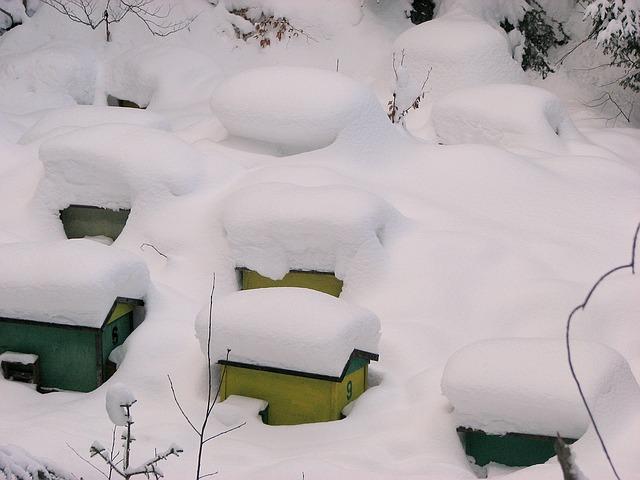
The colony should be provided with an abundance of food of good quality. No food better than good honey has ever been found for bees and the safest plan is to leave enough in the hives to supply the bees without feeding.
Not all honeys are equally good and in general it is safe to consider the lighter honeys preferable. The fall honeys are not considered as good as those obtained earlier. There are exceptions to these statements, however, since buckwheat honey is satisfactory.
Most honeys from tree sources are not so good as those from smaller plants because of the higher gum content. Honey-dew honey should not be left in the hives for winter stores, but if some is present the danger may be reduced by feeding ten pounds or more of sugar syrup after brood-rearing ceases. In case the colony is found to be short of stores a syrup made of granulated sugar may be
fed.
If the feeding is done early, one part of sugar to one part of water (by measure) is a proper proportion, but for later feeding one part of water to two and one-half parts of sugar is preferable. To the latter syrup, add one teaspoonful of tartaric acid to fifteen or twenty pounds of sugar while it is being heated to change the cane sugar to invert sugar.
Heating should be continued until every crystal is dissolved. Late feeding should be done rapidly. The use of candy for colonies which exhaust their stores in winter should be considered as an emergency treatment and nothing but granulated sugar should be used in making the candy. Before cold weather arrives each colony to be wintered out of doors should have in the combs thirty pounds of honey and preferably more.
Cause and effects of humidity in the hive
In winter, especially in a cold or poorly ventilated cellar, the atmosphere in the hive may become so laden with water vapor that water will condense on the cover, combs and sides of the hive, drop to the bottom board and even run out the entrance.
The source of this moisture is, of course, the food of the bees. Honey is a carbohydrate, and when consumed ultimately becomes carbon dioxide and water, one gallon of honey producing approximately one gallon of water. Unless the moisture is carried off in the form of vapor by convection currents in the atmosphere, it will be condensed in the hive, for bees do not ventilate the hive by fanning when clustered. The condensation of water may be prevented by raising the temperature, by abundant ventilation or by artificial drying, as by the use of unslaked lime.
These methods may be applied in the bee cellar. It should be recalled that an increase in the temperature of the atmosphere increases the capacity of the atmosphere for water vapor and thereby decreases the relative humidity.
Bees need water in winter but they get enough in their food provided the temperature does not get so high that the relative humidity of the outer air is too low. The optimum relative humidity has not been determined and, in fact, virtually no observations have been made on the relative humidity of the atmosphere of the hive or bee cellar.
Probably the great diversity of opinion as to the best temperature for the bee cellar is due to the unrecorded differences in the relative humidity of the various cellars observed.
Effects of ventilation
Ventilation of the hive and of the bee cellar depends upon the currents of air caused by the differences in temperature in two points, since bees do not mechanically ventilate the hive in winter.
The movements of air serve not only to remove carbon dioxide and bring in oxygen but, probably more important, the}’ carry out the surplus water vapor. Abundant ventilation is beneficial and becomes harmful only if the temperature is too greatly reduced thereby. It has been determined that bees survive in an atmosphere which contains an unusually high percentage of carbon dioxide but it is not wise to err on that side.
Disturbance
Any factor which induces undue activity in the winter must be considered as a disturbing factor. For example, low temperature, improper humidity, poor food or insufficient ventilation create an undue excitement which should be avoided.
Disturbance is usually considered, however, as applying to manipulation of the colony or to jarring while the colony is clustered. Any such circumstance causes the colony to raise the temperature, which may not again become normal for many hours. All manipulation or handling is to be avoided, therefore, especially in cold weather or in the cellar.
Colonies sometimes begin brood-rearing in winter, usually induced by some improper outside condition. The care of the brood then causes a high temperature and corresponding excessive activity which decimates the colony. Brood-rearing should so far as possible be avoided until the bees can fly freely.
In this connection it will be recalled that breeding often begins in colonies wintered out of doors during the coldest weather. The previously mentioned results on colony temperatures lend support to the theory that excessive outside cold causes the raising of the temperature of the cluster to the point where egg-laying is possible and that the beginning of breeding is a response to the stimulus of external cold.
Similarly, colonies wintered in the cellar may have their temperature raised by reason of an undue accumulation of feces and breeding may be begun. If these theories are tenable, winter breeding is to be considered as indicative of poor wintering and there is abundant evidence that the best results are obtained where no breeding takes place until the bees fly freely.
Outdoor wintering
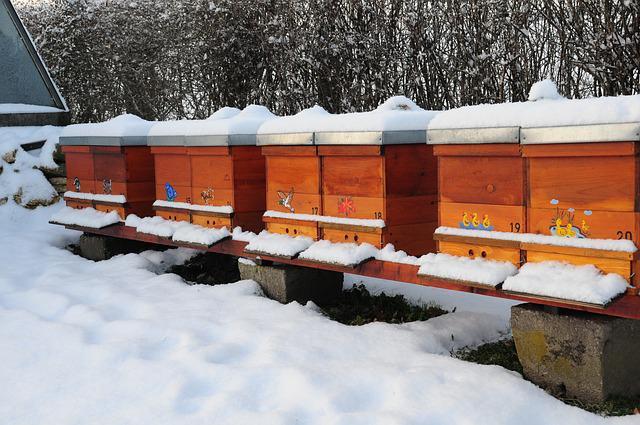
In warm situations, bees may be left outside all winter with no added protection, for they are often able to withstand great hardship and may even survive zero weather in a single- walled hive. However, if the energy of the colony is to be properly conserved, they should not be called upon to endure this.
Beekeepers are coming to the view that abundant packing is desirable and the tendency seems to be to use more than was formerly thought necessary. Packing serves to prevent the loss of heat generated by the bees and thereby materially lessens the muscular activity necessary. Just as it is practically impossible to leave too much honey in a hive for winter, so it has never been observed that a colony is too thoroughly packed.
A commendable plan, which has been in use for many years, is to place four colonies close together in a box, two facing east and two facing west, leaving room for four to six inches of planer shavings or dry leaves on all sides and perhaps a foot on top. The beekeeper may rest assured that the labor involved in thoroughly packing his colonies and in furnishing abundant stores will be repaid many fold.
Colonies wintered outdoors should be provided with packing early. While the temperatures of autumn nights are not so low as to endanger the bees, still the heat which must be generated in an unpacked hive is an unnecessary drain on the vitality and stores of the colony and for the average northern apiary it is desirable that the colonies be packed early in October.
Similarly, the packing should not be removed too early. When frequent examinations of the colony become necessary, the temporary packing around the hives becomes bothersome, but it is best to leave it on so long as it does not interfere with the work of the apiary. Where heavy outside packing is needed, the packing may usually be kept on until sometime in May.
Excerpted and edited from:
Beekeeping; a discussion of the life of the honeybee … 1915. Phillips, Everett Franklin, 1878-1951.
